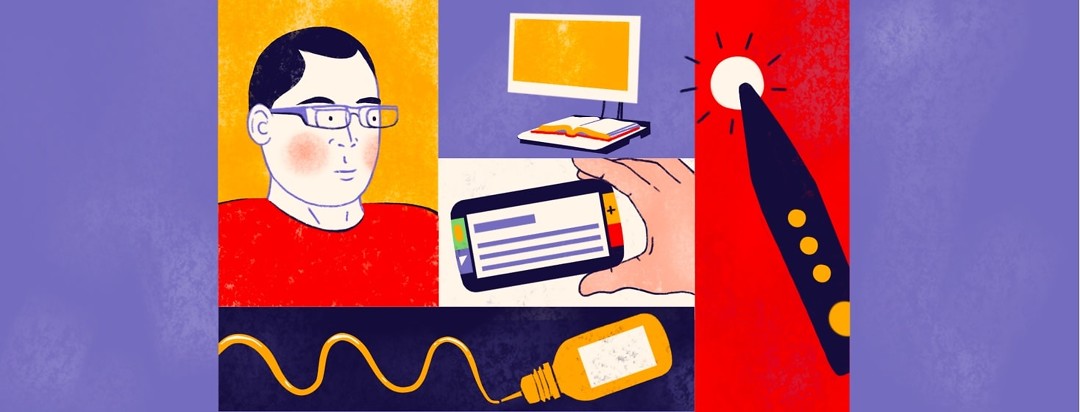Assistive Tools for Adapting to Life With Macular Degeneration
In part 1 of this article, I discussed finding a low-vision therapist and how they can teach us the skills we need to maintain our quality of life. I shared information from my friend with 2% vision who found they were extremely helpful. Now, continuing on with some of the devices that are available and how they might best work for us.
Creative labels for vision loss
Not all devices are expensive electronics. There are simple things I hadn’t heard of such as a tactile pen, which comes in white, black, or orange. You can create raised lettering, designs, or just dots like the bump dots we all know and love, but which seem to stay in place longer. My friend writes the first letter of the name of her spices on each one, so she doesn’t need to stop and taste or smell every time.
Similar products such as puff paint may be available at your local craft store. Another is something as convenient as a toothpaste dispenser, so it doesn’t end up on the floor. These are usually sold for children, but it’s one of the things my friend comments on frequently. Hers is attached to the wall.
What are voice labels?
There are voice labeling systems, which are adhesive or magnetic labels you can record on and record over, and attach to almost anything, from a can of soup to your files. They can even go in the freezer. Some are washable and made for your clothing. Then just touch the pen to the label to hear what it is.
Electronic devices for visual impairments
Two of the suggestions for devices made a huge difference in her life. A CCTV allows her to read most of what she needs, albeit slowly. There are a few differences in CCTVs. One important feature is that some can only focus on something perfectly flat on the table, and others are able to focus on a thick book or the back of a cake mix box.
The other suggestion is the Ruby, a small, easy-to-use handheld video magnifier she can take shopping, or to a restaurant. Ruby goes everywhere with her, and magnifies from 2 to 14 times, with the built-in LED lighting making it useful even in low light.
Google Home: A newspaper and a cookbook
Her Google Home has become an invaluable assistant. It takes the place of both her daily newspaper and a cook book! Keeping up with new technology has become extra important to those of us with low vision.
MaxTv glasses to the rescue
But the best one for her? When the therapist gave her a pair of MaxTv glasses to try, she said it was like being reborn! MaxTv glasses, available from MaxiAids, will focus on objects from 10 feet to infinity. They are suited to any distance viewing activity. They look like glasses in front of glasses and can be adjusted individually so that each lens can be focused separately, much like the adjustment on binoculars.
The company also makes MaxDetail glasses which are the same, but for a distance of 16 inches. My friend didn’t get the detail ones, so I can’t give a personal review for them.
Finding the right assistive devices for you
This is not a comprehensive review of what a low vision therapist can help with, or of what devices are available to us. But ones my friend found worth considering.
Do you plan to, or have you had, help from an occupational therapist for your vision? Do you have any suggestions to add that have helped you?

Join the conversation